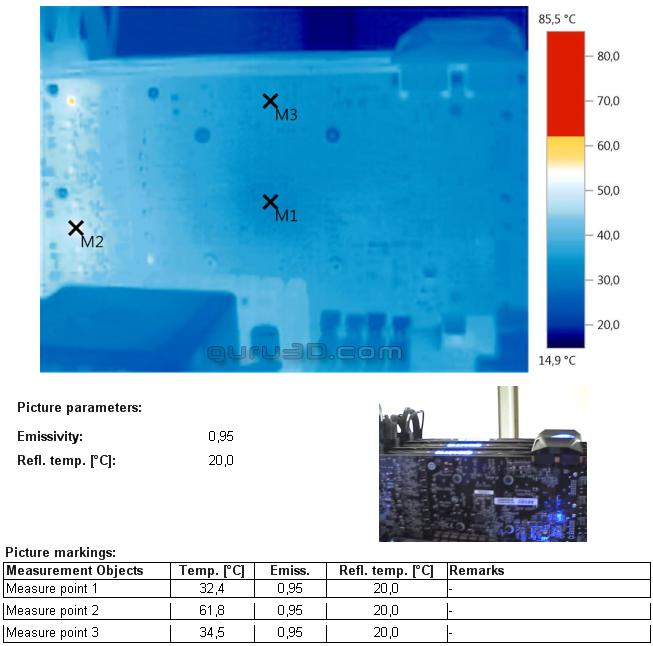Graphics Card Thermal Images (FLIR)
Thermal Imaging Temperature Measurements
A new addition to our reviews is the inclusion of Forward Looking Infra Red thermal images of hardware. Over the past years we have been trying to figure out what the best possible way is to measure temperatures on hardware. Multiple options are available but the best thing to do is to visualize heat coming from the product or component being tested. The downside of thermal imaging hardware is simple, FLIR cameras with a bit of decent resolution costs up-to 10000 EUR. Hence we passed on it for a long time. With a thermal imaging camera a special lens focuses the infrared light emitted by all of the objects in view. This focused light is scanned by a phased array of infrared-detector elements. The detector elements create a very detailed temperature pattern called a thermogram. It only takes about one-thirtieth of a second for the detector array to obtain the temperature information to make the thermogram. This information is obtained from several thousand points in the field of view of the detector array. The thermogram created by the detector elements is translated into electric impulses. The impulses are sent to a signal-processing unit, a circuit board with a dedicated chip that translates the information from the elements into data for the display.
The signal-processing unit sends the information to the display, where it appears as various colors depending on the intensity of the infrared emission. The combination of all the impulses from all of the elements creates the image. We can see hotspots on the PCB indicating, for example, GPU but also VRM temperature as well as how heat is distributed throughout a product. We do hope you will enjoy this new technology as it did cost us an arm and a leg to be able to implement it.
Above, you can see the graphics cards in IDLE conditions. We use 3-way SLI in this setup. The cards unfortunately do not have a back-plate. The advantage however is that we can very clearly see what is happening with heat. You can see NORMAL idle results for the GPU, hovering in the 30 degrees C range. That's perfectly fine. The VRM at M2 is running a bit hot though.
Now we stress the cards 100% with a game. We can measure pretty accurate temperatures at the GPU and VRM areas. So once we start to stress the GPU the thermals quickly change. We can measure thermals down to a 10th of a degree, our thermal camera is calibrated and does not lie. We reach ~52 degrees C on the GPU which remains great. VRM temps however peak to 87 Degrees C, though acceptable that is on the high side.
When we position the thermal camera outwards we can see that the overall cooler design really works well. The hottest point is the top side of the card where there is some residual PCB heat detected in the VRM area, close to 60 Degrees C there. Overall it is looking OK, you can see that the card is not exhausting hot air as the blue parts are cooled really well thanks to liquid cooling.
Another FLIR shot, this is a thermogram taken from the top side. The hottest spot is roughly 73 Degrees C at the M2 location, which is roughly the position of the VRMs. Overall we can't complain about the design and the airflow it directs nicely outside of the PC towards the radiator.
And here is that the control unit with the radiators exhausting heat, very respectable temps. The 120mm rads can easily cope with one GPU. So having three of them works out well.






